Unintended Acceleration In Toyotas: The Ghost In The Data
We didn’t make it down to the first meeting of the NHTSA-National Research Council panel tasked with studying unintended acceleration, but apparently we weren’t the only ones. A scan of the MSM confirms that a number of “more study is needed” stories were filed for the occasion, a good two weeks ago now, but we’ve been pointed towards the presentations for that meeting [ available for download here, all 128 slides in PDF format here], and we feel comfortable drawing a few conclusions from them. In fact, we’d even argue that this data puts a lot of the controversy over unintended acceleration in Toyotas to rest.
As the slide above indicates, there have always been three possible outcomes to the hunt for a ghostly electronic problem with Toyota’s throttle control units: either there’s a problem, there’s not a problem, or there’s a weakness that can be learned from. Remember, NHTSA has already fined Toyota for a slow recall of sticky pedals… for this study, we’re looking at instances of electronic issues. So, have NHTSA and the NRC found anything that indicates any kind of problem?
On the face of it, they have. Looking at the Vehicle Owner Questionnaire reports filed in the NHTSA database, it’s clear that complaints of sudden unintended acceleration in Toyotas have increased massively since 2008. But one slide alone doesn’t tell the whole story… first we must look at how this data came about.
Starting with 426,911 complaints since 2000, NHTSA eventually narrowed down to UA complaints only, finding nearly 20k incidents, which were winnowed down by “manual review” to about 11,500 complaints. How thorough this “manual review” was is a crucial issue though, because Bertel has pointed out that NHTSA’s database counts a number of cases as “UA-related” even when the circumstances don’t seem to fit the diagnosis. Still, even assuming the data are all relatively kosher, you’re left with Toyota causing about 3,000 of the 11,500 cases of unintended acceleration. This is the first sign that the 2009-2010 data is being skewed.
Another way to look at the data: incidents per 100k units. Already we can see weakness in the claim that Toyotas are uniquely affected by some kind of mysterious problem: Volvo, a company built on its reputation for safety, has had nearly an identical rate of UA complaints per 100k vehicles.
After NHTSA and the NRC “manually reviewed” the complaints (theoretically winnowing out fraudulent claims), Toyota starts looking even better by comparison. Before October of 2009, Toyota’s UA complaints were on-par with GM and Chrysler, and actually lagged behind Ford. Only post October 2009, when the media-fueled scandal started to take off, did Toyota’s UA complaints start getting out of hand. So, what can we conclude from this?
Yes, even NHTSA admits that there’s a “publicity effect” going into the spike in Toyota UA complaints. Given that the rest of the data fail to provide a pattern of UA problems in Toyotas, media and lawyer frenzy are the only plausible explanations for the recent spike in complaints. But we’re not done yet… next, let’s look at these incidents and try to find out what’s going on.
This might just be the most significant slide in the entire string of presentations, as it proves that the overwhelming majority of Toyota UA complaints took place at low speeds (another slide shows that the majority took place in parking lots). Note that these are not the high-speed freeway terror events that the media so blithely latched onto at the height of the frenzy. The fact that nearly all of these complaints happened at low speed is yet another parallel to the Audi 5000 debacle.
Another major factor: age. Extremely young and extremely old drivers are far more likely to experience sudden unintended acceleration… on this basis alone, it should seem clear that driver error is a major factor in most UA cases. Taken with the fact that the majority of these cases took place at low speeds, in parking lots, and that most complaints have been filed since the scandal broke, and the picture becomes fairly clear: the recall has given a green light to complain about any kind of accident that involves a Toyota that is unable to stop. What any car could do that would make it impossible control under 15 miles per hour is difficult to imagine.
This having been said, if you break the data down to incidents involving Toyota Camrys, you do get some interesting results. The fifth-generation Camry’s rates are far lower than the sixth-generation, which is a difficult statistic to square with the publicity effect hypothesis… especially because this graph shows only data for pre-recall complaints.
Finally, the only other correlation to be made from the NHTSA-NRC data is that electronic throttle control does play into the rate of complaints, although because this graph is not weighted for the publicity effect, it’s far from conclusive.
The upshot? Flawed as it is from the get-go (due to its amplification of the publicity effect), the NHTSA VOQ data shows few patterns that indicate an underlying problem unique to Toyota vehicles. Within the subset of Toyota UA complaints, there are patterns pointing to electronic throttles and the Mk.VI Camry, but these (though intriguing) do not explain why complaints of UA in Toyotas have taken off in the last nine months. In fact, the data more broadly suggests that Toyota is one of several manufacturers with elevated levels of UA incidents, and most of those incidents occur in situations where nothing prevents full control of the vehicle and where “accidents” are generally higher.
NHTSA and the NRC should continue to look into UA, and should continue to look into the possible causes for elevated complaint levels about Toyota, Ford, GM, Chrysler and Volvo cars, but the search for a “ghost in the machine” that uniquely affects Toyota products is clearly headed nowhere fast. Don’t expect outcome #1 from the top slide to come about, and even coming up with something conclusive for an outcome #3 seems unlikely.
In his presentation on human factors in UA [in PDF here], Richard Compton, Director of the Office of Behavioral Safety Research estimates that there are 10b “opportunities” for pedal misapplication each day, and he cites research showing that “correcting” pedal misapplication usually makes the situation even worse. His conclusions?
This, in a nutshell, is what the whole Toyota unintended acceleration scandal is boiling down to: either pedal design or some other ergonomic issue makes UA more common, in which case the government can regulate it, or Americans are really becoming worse drivers and are always glad to have a convenient scapegoat for their ineptitude. As unsatisfying as these conclusions are, making peace with them is the only healthy choice at this point. Unless, of course, Government-run “behavioral training and adjustment” sounds like a practical solution to you.
More by Edward Niedermeyer
Latest Car Reviews
Read moreLatest Product Reviews
Read moreRecent Comments
- Zerofoo No, I won't miss this Chevrolet Malibu. It's a completely forgettable car. Who in their right mind would choose this over a V8 powered charger at the rental counter? Even the V6 charger is a far better drive.
- Offbeat Oddity Nope, I won't miss it. I loved the 2008-2012 Malibu, but the subsequent generations couldn't hold a candle to it. I think the Impala was much more compelling at the end.
- Zerofoo An almost 5000 pound hot hatch that fell out of the ugly tree and hit every branch on the way down? No thanks.
- Tassos Jong-iL This would still be a very nice car in North Korea.
- Jeff One less option will be available for an affordable midsize sedan. Not much can be done about GM discontinuing the Malibu. GM, Ford, and Stellantis have been discontinuing cars for the most part to focus on pickups, crossovers, and suvs. Many buyers that don't want trucks or truck like vehicles have moved onto Japanese and South Korean brands. Meanwhile large pickups and suvs continue to pile up on dealer lots with some dealers still adding market adjustments to the stickers. Even Toyota dealers have growing inventories of Tundras and Tacomas.





























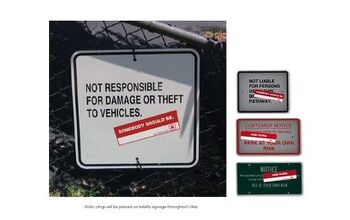
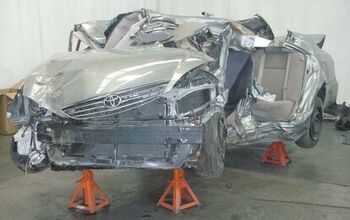


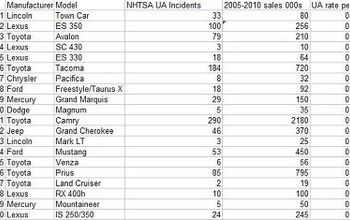

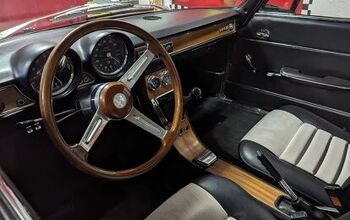




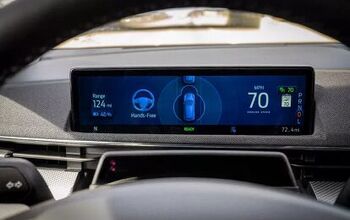



Comments
Join the conversation
More dead Camry drivers in Utah-- And, they'd even had their pedals and their mats fixed. http://news.yahoo.com/s/ap/20101115/ap_on_bi_ge/us_runaway_camry There remains more to this story.
Just like Chevy trucks were not an issue. I believe I even have an old copy laying around. But putting the fuel tank behind the seat proved deadly for dozens of people and eventually was changed. Not that you heard it here? Chevy trucks are great and no where else to put the tank I beleive was close to what you said. So many advertising dollars at stake the truth about cars from the manufacturers side only right? People probably died from this and toyota/lexus hid it with every thing they could find. Sure they have modified the software and maybe they fixed it and maybe not! They lied and covered up so why trust them now. Beside the quality has steadily decreased from my first toyota decades ago so I for one am playing it safe. I traded mine in on a Ford. And I will never venture into another Toyota (hired alot of ex GM managers) dealer.